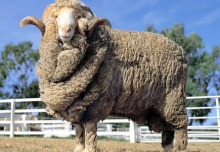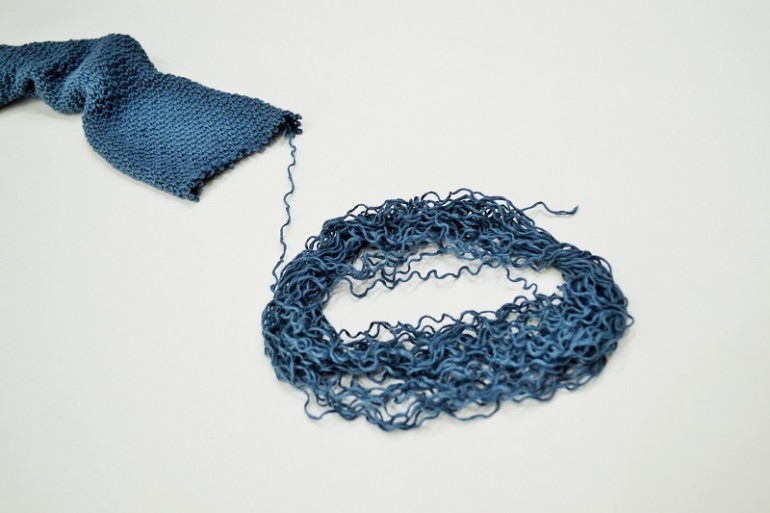
“I will unravel it and I’ll knit a new sweater” … it’s probably the most common phrase among knitters.
Many questions may rise from this thought! Are all yarns suitable for unraveling? Will the yarn be as pretty as before in order to knit it again? Will it be easy to unravel it? Will the yarn be enough for my new project?
Let’s go over the process, step by step or even better, stitch by stitch, like a pattern. Some yarns are fluffier than others (alpaca wool, mohair, fancy polyester yarns) and as we knit them, very strong bonds are created to the knitted fabric so unraveling is inappropriate. Some yarns usually refer to this phenomenon as felting. If you unravel such a yarn, it will turn to be very thin and weak, not suitable for knitting. Felted sweaters cannot be unraveled. When you can clearly see the outline of each individual stitch and see through the fabric, then this sweater is suitable for unraveling.
Keeping that in mind and now that you have decided to unravel it, you have to find out how your sweater has been knitted. Has it been knitted top – down or down to top, piece by piece? Notice that most pieces knitted cyclically (circularly) do not have seams. Try not to be confused with the finished ends at crewneck, or in front borders in cardigans. Those pieces usually are knitted at last, so in any case remember to start unraveling those parts first.
The easiest to find the yarn end, the easiest it is to unravel, with the minimum extra cutting of the yarn and avoiding knots. Another thing about knots is that we usually join each ball with a simple knot. The ends of the knots are knitted carefully between stitches. If this is the case, try to be meticulous in this point to avoid extra yarn cutting. Because if you lose extra yarn by cutting it in small pieces, you should take notice about the next project you plan to knit. The size of the new piece should be at least the same with the old one and also the consumption of the stitch pattern selected, should be considered. It is extremely difficult to find the same color or dye lot of the same yarn type, especially when the yarn has been bought years ago.
Knitted yarn turns to be curly. If you try to knit this yarn, most of the times the result is not as planned and the stitch definition is not that attractive. It looks like a bad knitted piece. The knitted garment ends at the bottom of the drawer, often unused.
Wrap the yarn into a ball as you unravel it. This keeps the yarn from getting tangled but afterwards it should be wrapped to a hank, with the help of your thumb and elbow or the back of a chair. Fasten securely the last end in order to find it easy later.
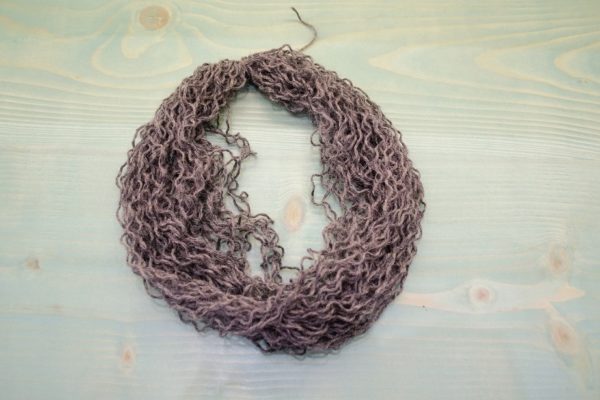
Unraveled yarn hank
Fill a big bucket with warm water, add wool shampoo and stir.
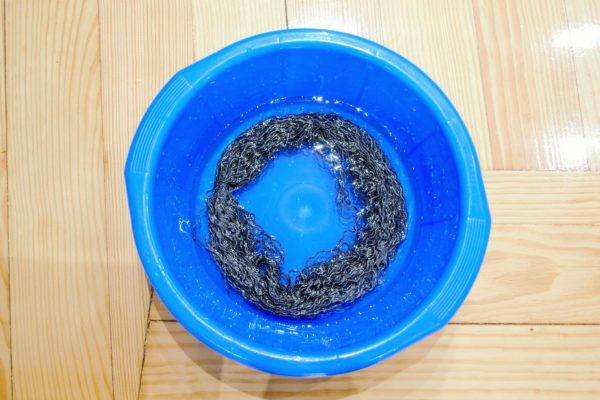
Yarn soaking
Gently push the yarn down into the soapy water, one hank at a time. Let it soak for same time, half an hour or more. Fibers will immediately return to their original form, straight! In many cases strings get their original fluffy and soft texture. Rinse the yarn with room-temperature water, or the same temperature as the water it was soaked in, until the water runs clear. Once it’s rinsed super well, squeeze the water out. Roll it up in a towel and squeeze hard. Hang the hanks to dry in the shade, on coat hanger.
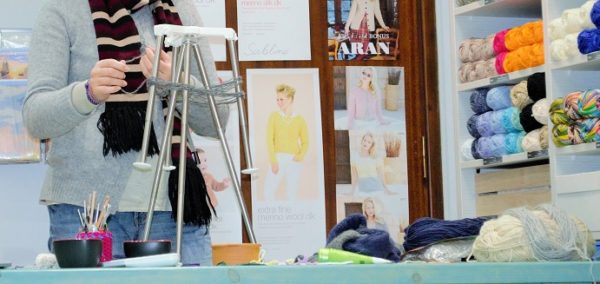
Yarn swift wrapping
Always keep in mind that the extent of how much yarn recovers, mainly depends on its quality and the care that you have shown. Apply the hank and allow it to dry thoroughly. Once it is completely dry, wrap it in balls using a yarn swift and the yarn is ready to be knitted again … like new!
Finally, the yarn is ready to be re-knitted!




